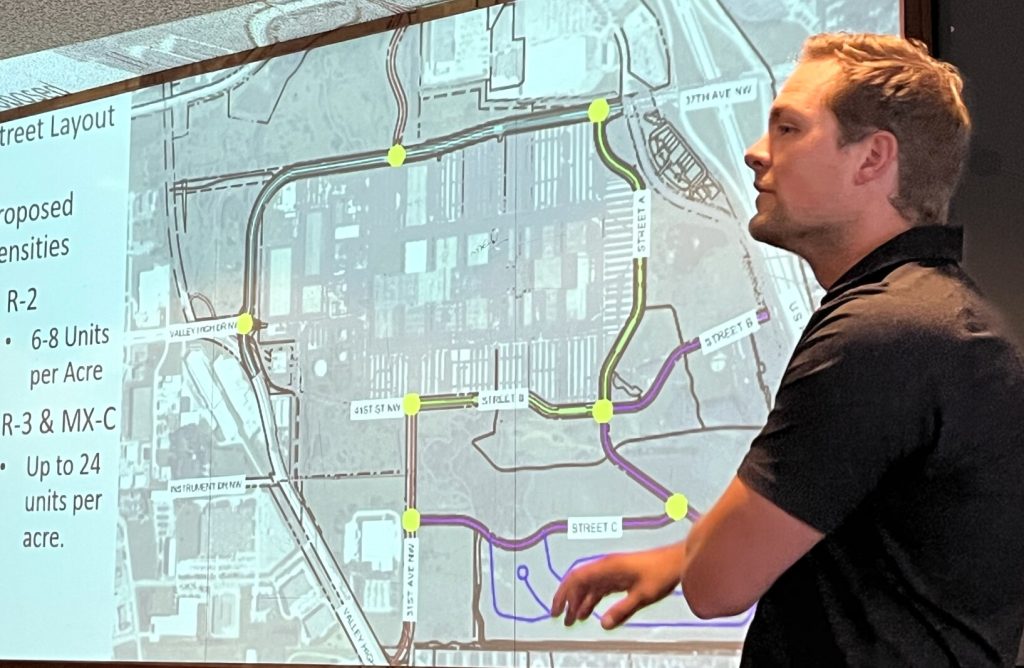ROCHESTER — Complete development of vacant portions of the former IBM campus is estimated to take seven to 10 years.
“This is strictly for the undeveloped property surrounding Big Blue,” IRG Realty Advisors Vice President Evan Vlaeminck told campus neighbors gathered on the campus Thursday.
The property owner, Rochester West Campus LLC,
purchased the 490-site for $33.9 million
in 2018 and
held a similar meeting a year ago,
when the site was in the running for
the city’s planned sports and recreation complex.
Vlaeminck said work on a traffic study delayed submission of an initial development plan for the site now known as Rochester Technology Campus.
With roughly 250 acres to be developed, Thursday’s update started a 30-day clock for submitting an initial plan to the city, which is intended to ensure the property owner investigates the broad effects development on the site, as well as the potential impacts to neighboring properties.

Contributed / Industrial Realty Group
With roughly 30 neighbors in attendance, those living south of the site largely voiced concern about plans to add housing in a field that sits between their homes and the building built by IBM and now managed by IRG.
Connor Burke, an engineer with Short Elliott Hendrickson Inc., said zoning on the site isn’t expected to change with the proposed plan, meaning single-family homes, townhomes and fourplexes could be built north of the existing houses.
Vlaeminck estimated 80 to 100 townhomes could be added to the area, but noted some builders have contacted IRG with interest in adding single-family homes to the site.
Closer to the existing building, which houses a variety of businesses, the existing residential zoning would allow more density, making way for apartment buildings.
“This has always been contemplated as a form of multi-family housing, even going back to IBM ownership of the property,” Vlaeminck said.
However, he indicated the first housing development on the overall site could start in the northwest corner of the campus, due to its 41st Street Northwest access. The site could see greater residential density, along with commercial development, under the current mixed-use zoning.
Vlaeminck said the second-highest development interest has been seen near U.S. Highway 52, where the campus accesses the frontage road. The area could be used to develop hotels, restaurants and other commercial businesses.
“The retail interest has been greater than I would have anticipated,” he said of potential development near the highway.
The rest of the campus could see added commercial or light industrial uses.
“Probably the only thing we will not build here is offices, because we have a lot of it, and we are looking to repopulate that currently,” Vlaeminck told the neighbors of plans for the overall site.
He said actual development phasing will depend on market interest as IRG attracts potential partners ready to take the next steps on the site. Any future development will require more-detailed site plans, as well as neighborhood meetings before the plans are submitted to the city.
Alongside the current work on a general site plan, Vlaeminck said an environmental review is awaiting state approval and traffic studies continue to determine potential street changes to improve access to the site.


